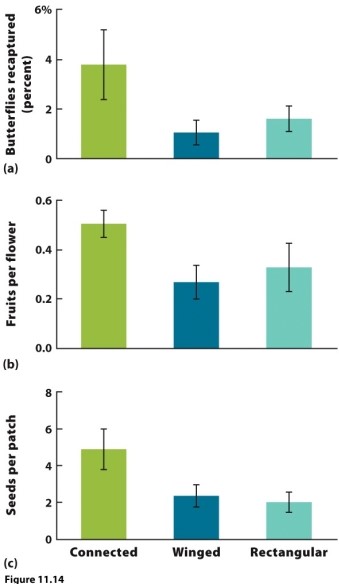Essay

(Figure 11.14) Researchers used an experimental design in which they cleared large patches of pine forest in five areas. The central cleared area served as the source of dispersers. The four remaining cleared patches were (1) a rectangular unconnected patch, (2) a rectangular patch connected to the central patch by a cleared path that served as a corridor, (3) two rectangular patches with wings (patches with corridors that did not connect to other patches). The researchers were interested in the importance of habitat corridors to the movement of seeds, pollen, and butterflies between central and peripheral habitat patches. What was the purpose of the unconnected winged patches?
Correct Answer:

Verified
The unconnected winged patches allowed t...View Answer
Unlock this answer now
Get Access to more Verified Answers free of charge
Correct Answer:
Verified
View Answer
Unlock this answer now
Get Access to more Verified Answers free of charge
Q12: A researcher counts the number of individuals
Q13: Which of the following populations would be
Q13: Methods such as area-based, volume-based, and line-transect
Q16: Why does reduction of a population lead
Q16: <img src="https://d2lvgg3v3hfg70.cloudfront.net/TB5501/.jpg" alt=" (Figure 11.5)
Q31: The emerald ash borer (Agrilus planipennis) is
Q39: Which of the following does NOT explain
Q51: In populations that fit a source-sink metapopulation
Q58: Compare and contrast the terms dispersion and
Q61: Which of the following is NOT a